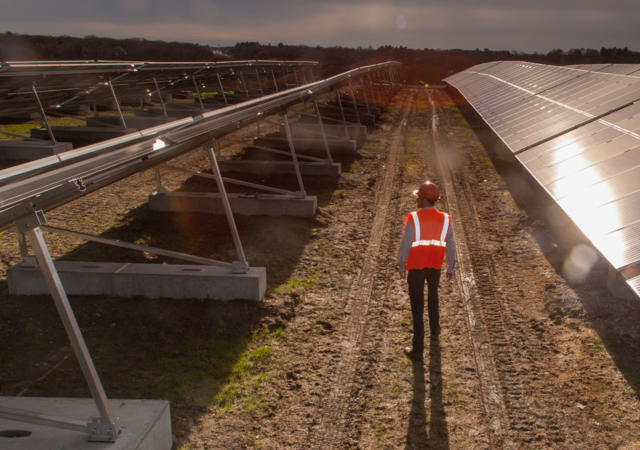April 20, 2022
|
With taller towers and longer blades, are lightning strikes to wind turbines becoming more common? Lightning strikes are on the rise, which means the chances of wind turbines sustaining lightning damage are also increasing. Lightning activity directly correlates with the surface temperature of the earth as well as several other parameters. Increasing surface temperatures could increase thunderstorm activity, which typically includes lightning. Research has highlighted the impact of climate change on the prevalence of lightning. One such study from the University of California published in Science magazine showed that a 1°C increase in temperature would increase the frequency of lightning strikes by 12%. Recent data from Vaisala on lightning frequency indicates that the number of strikes in the continental United States increased by 14% in 2021 versus 2020, with Texas having the highest number of strikes of all U.S. states that year. When a specific site is determined to be at higher risk for damage from lightning, it is important to have an appropriate system in place to monitor your site for potential lightning strikes and inspect for possible damage. If you suspect you’re experiencing more lightning strikes on turbines than you previously have or simply want to be proactive, checking your lightning risk is a good place to start. A site-specific lightning study can help you review your lightning risk. You can then determine if your lightning protection system performs up to its specified protection level. Can the siting and operations of turbines impact lightning risk? While there are few formal studies of what drives turbine lightning risk, it is generally a good idea to consider the site and operation of turbines. First, the amount of wind energy capacity deployed is growing every year – quadrupling over the past decade, according to the Global Wind Energy Council (GWEC). With the increased number of turbines and frequency of lightning strikes, the probability of lightning damaging wind turbines naturally increases. As the hub height of new wind turbines increases and rotor diameters expand, the risk from lightning also increases. The upside to this is that more strikes allow for more information in this field. A project’s location also may be a factor in the risk of lightning activity, affecting some sites more than others. Projects in the Midwest are seeing the most significant amount of lightning activity. The local elevation of the project and surrounding geography also can play a role within specific regions. Other studies have shown that if the wind turbines are installed too closely together, a lightning strike on one turbine increases the chances of lightning interaction with a neighboring turbine. Several studies have noted that the blades' normal rotation may increase the risk of lightning strikes. Therefore, operational practices, including shutting down turbines if lightning is detected nearby, may be an option if lightning risk at a site is of concern. The selection of turbine equipment also may impact the risk of damage from lightning. Through its review of lightning blade damage, UL has observed that the type of material used to build the blades and the design of the lightning protection system can change the risk from lightning damage. All wind turbine Original Equipment Manufacturers (OEMs) include Lightning Protection Systems (LPS) in their designs. However, not all LPS designs perform with the same effectiveness. A lightning assessment can help manage expectations around risk The key to managing expectations from lightning risk is to understand each project’s baseline risk level by conducting a site-specific lightning assessment. The benefits of such an evaluation include:
If you want to know more about how a lightning assessment can help you, contact UL’s advisory team at renewableenergyservices@ul.com.
|


